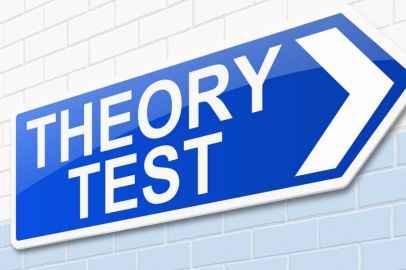Embarking on the journey to obtain a driver’s license is an exciting and pivotal moment in one’s life. Central to this journey is the theory test, a critical step that evaluates your understanding of road rules, signs, and hazard perception. While the theoretical knowledge is essential, the significance of continuous practice cannot be overstated in ensuring theory test success. In this comprehensive guide, we’ll delve into why continuous practice is a linchpin in mastering the theory test and achieving the much-coveted driver’s license.
Understanding The Theory Test
Before we delve into the role of continuous practice, it’s crucial to comprehend the structure and purpose of the theory test. The test typically consists of two main components: the multiple-choice section and the hazard perception test.
The multiple-choice section assesses your theoretical knowledge of driving, including road signs, rules, and regulations. On the other hand, the hazard perception test evaluates your ability to identify and respond to potential hazards while driving through a series of video clips.
The Fallacy Of Cramming
Many aspiring drivers may be tempted to adopt a ‘cramming’ approach, dedicating intense study sessions close to the test date. However, this strategy often falls short in adequately preparing individuals for the dynamic challenges presented in the theory test.
Cramming may allow you to temporarily memorize information, but the theory test demands a deeper understanding that goes beyond mere recall. Continuous practice, on the other hand, facilitates the development of a robust foundation, enhancing your ability to apply theoretical knowledge to real-world driving scenarios.
The Benefits Of Continuous Practice
Retaining Information Over the Long Term: Continuous practice allows information to be absorbed and retained over an extended period. This is crucial not only for passing the theory test but also for becoming a knowledgeable and responsible driver in the long run.
Developing a Habit of Learning: Consistent practice establishes a habit of learning, transforming the preparation process into a routine. This habit fosters a sustained commitment to understanding and internalizing driving principles.
Improving Reaction Time: The hazard perception test assesses your ability to identify and respond to potential dangers swiftly. Regular practice sharpens your observational skills and hones your reaction time, essential elements for success in the test and safe driving.
Building Confidence: Confidence is key when facing the theory test. Continuous practice builds confidence by familiarizing you with the format of the test, reducing anxiety, and instilling a sense of preparedness.
Identifying Weaknesses and Areas for Improvement: Regular practice unveils areas where you may be struggling or lacking understanding. This insight allows you to target specific weaknesses, seeking additional information or guidance to strengthen your knowledge.
Adapting to Test Conditions: The theory test is conducted under specific conditions, including time constraints and a set format. Continuous practice helps you adapt to these conditions, ensuring that you can navigate through the test efficiently and effectively on the actual day.
Practical Strategies For Continuous Practice
Establish a Consistent Schedule: Set aside dedicated time each day or week for theory test practice. Consistency is key to developing a habit of learning and maintaining momentum.
Utilize Online Resources and Apps: Numerous online platforms and mobile applications offer a wealth of practice material for both the multiple-choice and hazard perception sections. These resources often simulate real test conditions, providing an immersive and effective practice environment.
Mix Multiple-Choice Questions with Hazard Perception Practice: Balance your practice between the multiple-choice and hazard perception components. This ensures a holistic approach to your preparation, addressing both theoretical knowledge and practical application.
Review Incorrect Answers Thoroughly: When practicing multiple-choice questions, pay close attention to incorrect answers. Understand why a particular option is wrong, reinforcing your understanding of the correct information.
Engage in Mock Tests Regularly: Incorporate full-length mock tests into your practice routine. These simulate the actual test experience, helping you gauge your readiness and identify areas that may need more attention.
Seek Feedback from Instructors or Peers: If possible, involve your driving instructor or peers in your practice sessions. Their feedback can provide valuable insights and different perspectives, enriching your overall learning experience.
Overcoming Challenges in Continuous Practice
Battling Procrastination: Continuous practice requires discipline, and procrastination can be a significant obstacle. Break your practice sessions into manageable chunks, making it easier to stay motivated and focused.
Addressing Burnout: While consistency is crucial, be mindful of burnout. If you find your motivation waning, take short breaks, vary your study methods, and keep the end goal in mind.
Staying Updated with Changes: Driving regulations and test formats may evolve. Stay informed about any updates or changes to ensure your practice aligns with the most current requirements.
Conclusion
Continuous practice is the bedrock of theory test success. By adopting a consistent and disciplined approach, aspiring drivers can not only pass the test but also lay the groundwork for a lifetime of safe and responsible driving. The theory test is not just a hurdle to obtaining a driver’s license; it is a crucial step toward becoming a knowledgeable and proficient driver. Embrace the journey of continuous practice, and you’ll not only conquer the theory test but also embark on a lifetime of confident and safe driving on the open road.
Also Read: How To Earn Free V-Bucks in Fortnite: Tips and Legitimate Methods


